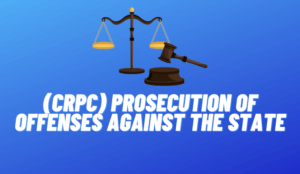Do you want to know about the Concept of Criminal Conspiracy? Then, read this article to learn about the Concept.

Introduction:
This article delves deeply into the concept of Criminal Conspiracy. At its core, it involves an agreement between two or more individuals to either use unlawful means to accomplish a lawful act or to commit an illegal act outright. Section 120A of the Indian Penal Code, 1860, specifically addresses this offense, emphasizing its significance in maintaining legal order.To provide clarity on the subject, the discussion includes examples and notable case laws that illustrate the intricacies of Criminal Conspiracy. Notably, it is classified as a substantive offense, allowing for individuals to be charged with both Criminal Conspiracy and another associated crime under the IPC or any other applicable law in India.Criminal conspiracy is a nuanced and complex legal concept that requires thorough understanding. The article underscores that even if the agreed-upon illegal act is not executed, the mere act of forming such an agreement constitutes a punishable offense. This reflects the law’s acknowledgment of the potential harm that the act of conspiracy itself can inflict, irrespective of whether the crime is carried out.By exploring these aspects, the article aims to equip readers with a comprehensive understanding of Criminal Conspiracy, its legal implications, and the importance of adhering to the laws in their jurisdiction.
History:
A conspiracy arises when two or more individuals agree to commit an unlawful act, a serious offense first acknowledged by the Star Chamber in 1611. In the Poulterer case, Walter and others falsely accused Stone of theft, damaging his reputation with rumors of dishonesty. Stone, however, provided evidence proving his absence during the alleged incident, leading the court to declare him innocent. Despite this, the defendants attempted to resolve the matter outside court, resorting to bribing witnesses and accusing Stone of repeated fraudulent claims. The court ruled that even minimal coordination among the defendants constituted a crime, regardless of Stone’s innocence.
The Law Amendment Act of 1913 introduced significant changes to how conspiracy was treated under the law, making it a standalone offense. Before this, conspiracy was punishable either for aiding someone in committing a crime or for direct involvement in a specific offense. In 1870, a provision was added to criminalize conspiring against the government of India, but it was only in 1913 that Criminal Conspiracy was formally recognized as an independent crime. This means that individuals can be charged with conspiracy simply by agreeing to commit an illegal act, even if the act is not carried out. To prove conspiracy, it must be shown that two or more persons collaborated to achieve an unlawful goal through criminal means. The seriousness of this offense is evident in cases like Poulterer, where Walter and others falsely accused Stone of theft and repeatedly tried to tarnish his reputation.
Stone faced baseless accusations of dishonesty and theft, with rumors spread to damage his character. However, he provided a strong defense, supported by a witness and nearly 30 individuals who testified that he was in London during the alleged robbery. Convinced of his innocence, the jury discharged Stone, deeming him an ignorant but harmless person. Seeking to restore his reputation, Stone approached the Star Chamber. Meanwhile, the defendants attempted to resolve the matter by persuading him to drop the case but resorted to bribing witnesses and accusing Stone of barratry, alleging he repeatedly made fraudulent court claims.
MEANING OF CRIMINAL CONSPIRACY
SECTION 120A I.P.C
Criminal conspiracy is defined as an agreement between two or more people to perform,
or cause to be done, one of the following crimes:
- An illegal act
- An act that is not unlawful by illegal means
Under Section 43 of the Indian Penal Code, the term “illegal” encompasses acts prohibited by law or those providing grounds for civil action. Even a minimal agreement to commit an offense qualifies as Criminal Conspiracy under Section 120A, without requiring proof of any accompanying act or illegal omission. However, such an act is necessary only when the conspiracy’s aim involves unlawful conduct not including murder. Whether the illegal act is the primary objective or merely incidental to it is considered irrelevant under this provision.
INGREDIENTS
- Criminal Conspiracy requires the involvement of at least two individuals who agree to commit an unlawful act or achieve a lawful purpose through illegal means. Even if one of the conspirators is unknown, missing, or deceased, the remaining individual can still be held accountable.
- A shared malicious intent to commit a criminal act or accomplish a non-prohibited act through unlawful methods is essential to establish such a conspiracy.
PUNISHMENT OF CRIMINAL CONSPIRACY
Under Section 120B of the Indian Penal Code punishment is specified for Criminal
Conspiracy:
- When a major crime is the intended victim of a criminal conspiracy: If the plot involves committing an offence
- Punished with a death sentence
- Imprisoned for life
All the persons who have committed the offence of Criminal Conspiracy will be punished in
the same manner that is been stated above. Any person who is involved in committing
such an offence shall be imprisoned for at least a period that is not less than six months or
a fine or at times even both.
EVIDENCE OF CRIMINAL CONSPIRACY
A person can prove that the other party has committed the offence of Criminal Conspiracy
either by providing direct or circumstantial (indirect) evidence. Generally, conspiracy is
planned secretly and privately and that is the main reason why it is very difficult to
produce strong evidence to support the claim regarding the date when the conspiracy was
planned, the total number of persons involved in it, the object of such conspiracy and
regarding how the conspiracy is said to be carried out.
SECTION 10 OF THE INDIAN EVIDENCE ACT,1872
Section 10 of the Indian Evidence Act, 1872, establishes that once a conspiracy to commit an unlawful act is proven, any act carried out by one conspirator is considered an act of all participants involved in the same plan. Additionally, Section 10 highlights the importance of legitimacy and admissibility when presenting such evidence in a court of law.
It is further stated that any action or written statement made by one conspirator regarding their shared intent is admissible as evidence against all conspirators, helping to establish the existence of the conspiracy or the involvement of others in it. However, certain conditions must be met for such evidence to be admitted: there must first be a legitimate basis to suspect that two or more individuals have conspired to commit a crime or engage in unlawful activities.
